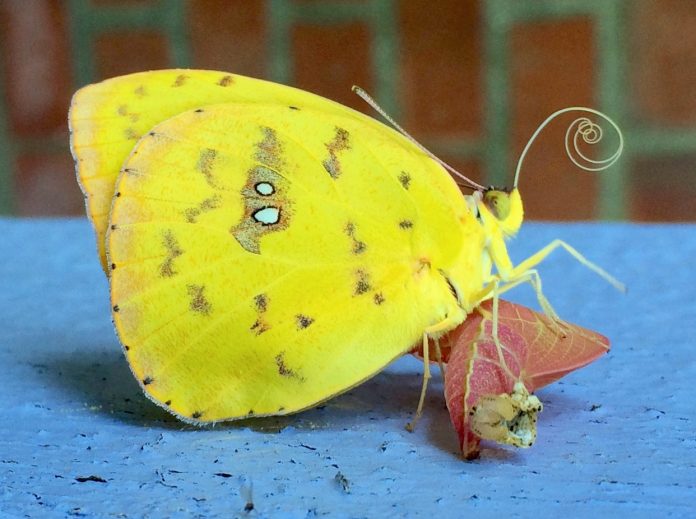Marcia Van Loy, a volunteer with the master Gardener Association for 17 years, came to La Mesa’s Beautiful annual meeting to talk about how people can grow plants for all types of pollinators. La Mesa Beautiful recognizes and gives awards to residences and businesses for landscaping beauty, most of which are drought-tolerant.
Marcia Van Loy, a volunteer with the master Gardener Association for 17 years, came to La Mesa’s Beautiful annual meeting to talk about how people can grow plants for all types of pollinators. La Mesa Beautiful recognizes and gives awards to residences and businesses for landscaping beauty, most of which are drought-tolerant.
But drought-tolerant does not mean dull; on the contrary, flowers and blooms of all kinds can brighten any landscaping. Those flowers are fodder for butterflies, birds and bees, all of which are pollinators and add more visual interest to gardens and yards.
The Earth’s ecosystems depend on pollinators, Van Loy explained. Seventy-five percent of flowering plants and over 30 percent of crop species all depend on pollinators. Pollinators, which include bees, birds, butterflies, moths–and even bats and lizards—make possible the distribution of pollen among plants, thereby producing fruit and seeds.
“Pollinators visit flowers to sip the nectar and to gather pollen for their breed,” said Van Loy. “You’ll notice the bright yellow round pods of pollen on bees’ legs. Those are called pollen buckets.”
Bees, of course, are the most important pollinators, with 4,000 species in the U.S., 600 of those in California. However, they have been on the decline because of the increased use of pesticide, climate change, introduction of non-native species, and disappearing wild lands.
“But we can help as gardeners,” Van Loy said. “We can provide floral and nesting resources for pollinators. They need food, water, shelter and a place to raise the young.
A healthy, flowering drought-tolerant garden buzzes with the business of bees and other pollinators at all times of the year.
“To maximize pollinator potential, think variety and diversity,” Van Loy said. “Staggering bloom times ensure food for each pollinator’s unique season.”
Even bugs, often considered as pests by gardeners, should be considered an important part of the ecosystem for pollinators. For instance, hummingbirds, a favorite pollinator for most gardeners, do use nectar from flowers as one of their major food sources. However, hummers are also voracious insect-eaters, going for everything from flies to gnats to weevils–and spiders, particularly daddy long-legs.
On the matter of insects, it is good to have the attitude that a few chewed-off leaves on some of the plants are just fine.
“That means that caterpillars are around, which turn into butterflies,” said Van Loy.
Van Loy said she once received a particularly humorous phone call from a woman distressed about the chewed-off leaves of her milkweed plants. The woman said she was growing milkweed to attract monarch butterflies, which was the correct thing to do, but she was very upset about all the caterpillars and wanted to get rid of them.
Another positive factor of a drought-tolerant garden is that while plants do well in the sun, the pollinators also thrive. Butterflies, in particular, need sun to help their bodies warm up enough to fly.
“But most important that I hope you walk away with today,” Van Loy said, “is that you should not use pesticides of any kind in your garden or yard. Just let nature take its course.”
Classes, workshops and other events on attracting pollinators and other gardening topics will be available at the Spring Seminar held at the County of San Diego Operations Center on March 17. Go to http://www.mastergardenersd.org/ for more information.














